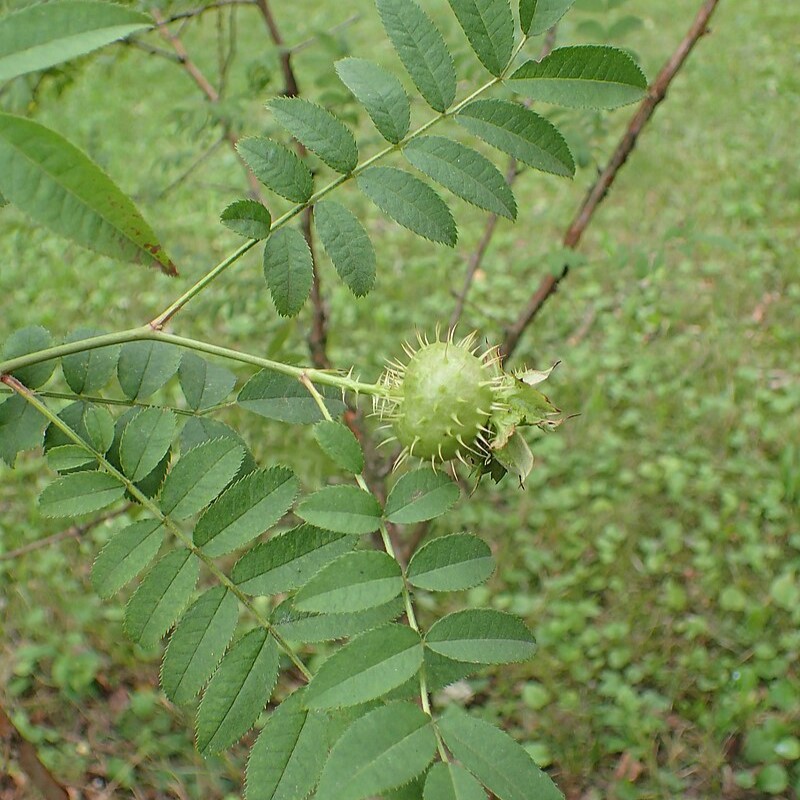Rosa roxburghii
Overview
| Genus | Rosa |
| Species | roxburghii |
| Common Name | Burr rose, chestnut rose, or chinquapin rose |
| Abbreviation | R. roxburghii |
| Ploidy | Diploid |
| Chromosome Number | 2n = 14 |
| Genome Size | 480 Mb |
| Genome Assemblies | 2 |
| Cross Reference | NCBI taxon: 74654 |
Organism Image

Description
Rosa roxburghii, (the burr rose, chestnut rose, or chinquapin rose), is a species of flowering plant in the family Rosaceae, native to the eastern Himalayas, Tibet, and central and southern China. In the wild it is found in thickets, mountain forests, on slopes, and alongside streams, typically 500 to 1,400 m (1,600 to 4,600 ft) above sea level. A diffuse shrub capable of reaching 8 m (26 ft) but usually shorter, it is available from commercial suppliers. In China, it is cultivated for its vitamin C-rich hips on 170,000 ha (420,000 acres), mostly in Guizhou.
It was dedicated to William Roxburgh, a Scottish physician and botanist who was director of the Calcutta Botanical Garden.
Three forms have been recognized: Rosa roxburghii f. roxburghii, which has double or semi-double, reddish or pink flowers 5–6 cm (2.0–2.4 in) in diam.,Rosa roxburghii f. normalis Rehder & E. H. Wilson (in Sargent, Pl. Wilson. 2: 318. 1915), which has simple, pink flowers 4–6 cm (1.6–2.4 in) in diam. and also, Rosa roxburghii f. hirtula (Regel) (Rehder and Wilson), flowers single, pale pink or lilac-pink from Japan.
Whole Genomes
Whole Genome Sequences & Annotations for Rosa roxburghii
S genes
Rosa S genes Nucleotide
- Rosa rugosa S locus F-box protein (SLF) mRNA, complete cds
- Rosa rugosa S locus F-box protein (SFB) mRNA, complete cds
Rosa S genes Protein
Downloads
The Rosa roxburghii S gene sequences are available in FASTA format.
| CDS and Protein (FASTA file) | S-gene_Rosa_roxburghii |
Publications
Lu M, An H, Li L. Genome Survey Sequencing for the Characterization of the Genetic Background of Rosa roxburghii Tratt and Leaf Ascorbate Metabolism Genes. PLoS One. 2016 Feb 5;11(2):e0147530. doi: 10.1371/journal.pone.0147530.
Zong D, Liu H, Gan P, Ma S, Liang H, Yu J, Li P, Jiang T, Sahu SK, Yang Q, Zhang D, Li L, Qiu X, Shao W, Yang J, Li Y, Guang X, He C. Chromosomal-scale genomes of two Rosa species provide insights into genome evolution and ascorbate accumulation. Plant J. 2023 Nov 15. doi: 10.1111/tpj.16543.